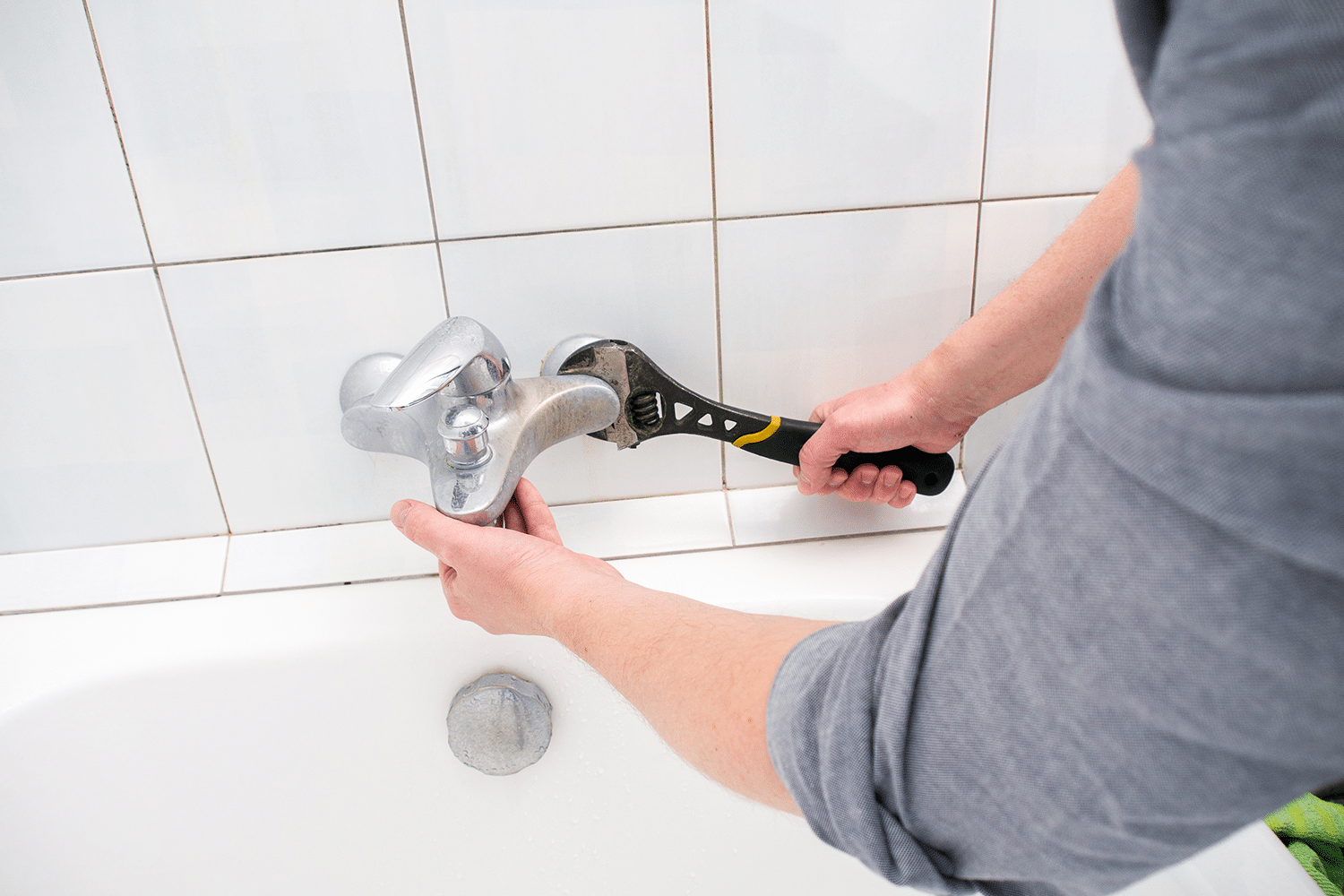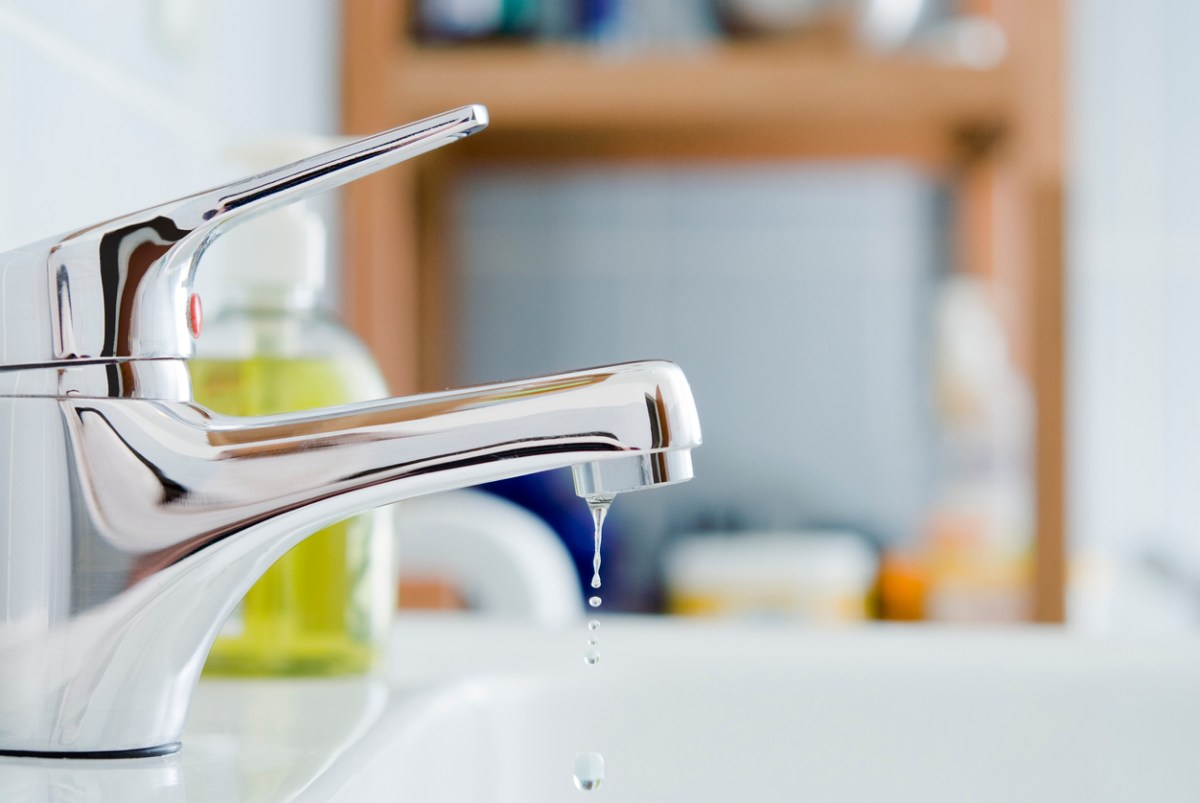We have noticed this great article involving Should I Repair or Replace a Leaky Faucet? listed below on the internet and believe it made perfect sense to relate it with you on this page.

Dripping faucets may feel like a small inconvenience, but their impact exceeds just the inconvenience of the noise. From wasting water to incurring unnecessary financial costs and health risks, ignoring a dripping tap can bring about numerous repercussions. In this post, we'll explore why it's essential to address this usual house concern immediately and successfully.
Wastage of Water
Ecological Effect
Dripping taps add significantly to water wastefulness. According to the Epa (EPA), a single tap dripping at one drip per secondly can lose more than 3,000 gallons of water annually. This not only stress water sources however additionally impacts ecosystems and wild animals depending on them.
Step-by-Step Guide to Dealing With a Dripping Faucet
Tools Called for
Before trying to deal with a dripping tap, collect the necessary tools, including a flexible wrench, screwdrivers, substitute parts (such as washers or cartridges), and plumber's tape.
Typical Faucet Issues and Their Solutions
Determine the kind of tap and the details issue triggering the drip. Common problems include worn-out washers, rusty shutoff seats, or damaged O-rings. Describe supplier instructions or on-line tutorials for detailed advice on repair services.
Financial Expenses
Boosted Water Expenses
Beyond the environmental influence, trickling faucets can inflate water bills considerably. The gathered waste in time translates right into higher utility expenditures, which can have been stayed clear of with timely repairs.
Prospective Residential Property Damage
In addition, extended dripping can cause damage to components and surface areas surrounding the tap. Water build-up can create staining, rust, and also architectural issues if left neglected, resulting in extra fixing costs.
Wellness Concerns
Mold and Mold Development
The constant existence of wetness from a trickling tap creates a suitable environment for mold and mildew growth. These fungi not just endanger interior air quality however likewise present wellness threats, particularly for individuals with respiratory conditions or allergies.
Waterborne Diseases
Stagnant water in trickling taps can come to be a breeding place for microorganisms and various other microorganisms, enhancing the danger of waterborne diseases. Contaminants such as Legionella microorganisms prosper in stagnant water, potentially leading to significant health problems when ingested or inhaled.
Do it yourself vs. Professional Fixing
Benefits and drawbacks of DIY Repair
While some might attempt to deal with a leaking tap themselves, DIY repairs include their own set of obstacles. Without appropriate expertise and tools, do it yourself efforts can exacerbate the problem or lead to incomplete fixings, prolonging the issue.
Advantages of Hiring an Expert Plumber
Working with a professional plumber guarantees that the underlying root cause of the trickling faucet is resolved efficiently. Plumbers have the experience and equipment to identify and fix tap issues efficiently, conserving time and decreasing the risk of further damage.
Environmental Responsibility
Private Contribution to Conservation
Taking duty for dealing with leaking faucets aligns with more comprehensive efforts toward water preservation and environmental sustainability. Every individual's activities collectively make a significant effect on protecting valuable sources.
Sustainable Living Practices
By prioritizing timely repairs and embracing water-saving habits, people contribute to sustainable living techniques that benefit both existing and future generations.
Preventive Measures
Routine Upkeep Tips
To prevent dripping taps, execute routine maintenance such as cleansing aerators, inspecting for leaks, and changing damaged components promptly. Furthermore, take into consideration mounting water-saving devices or upgrading to much more effective fixtures.
Significance of Prompt Fixes
Attending to trickling taps as quickly as they're observed stops additional water waste and prospective damage, ultimately saving both water and money in the future.
Influence On Residential Or Commercial Property Value
Understanding of Well-Maintained Home
Preserving a building in good condition, consisting of resolving upkeep problems like dripping taps, boosts its viewed value and worth amongst prospective buyers or occupants.
Influence on Resale Worth
Features with well-kept plumbing fixtures, consisting of faucets, command greater resale values in the property market. Attending to dripping taps can contribute to a favorable impression throughout residential or commercial property examinations and settlements.
Verdict
Resolving a dripping tap surpasses mere comfort; it's an essential step towards preserving water, decreasing monetary prices, and safeguarding health and wellness and building. Whether through DIY repair work or expert help, doing something about it to repair leaking faucets is a tiny yet impactful means to promote accountable stewardship of sources and add to a healthier, a lot more sustainable future.
How to Fix a Leaky Faucet: Step-by-Step Repair Guide
A leaky faucet may seem like a simple annoyance, but if it's not fixed promptly, that leak could cost hundreds to potentially thousands. From water damage to mold, mildew, and high water bills, even a tiny leak can be catastrophic if left unattended. Damage like this can even affect the overall value of your home, so it's important to take the right approach for leaky faucet repair. You may need the help of a plumber in some cases, but we've got a few tips you can try on how to fix a leaky faucet before calling the pros.
Four Faucet Types
When you're learning how to fix a leaky faucet, the first step is knowing what kind of faucet you're working with! There are four common types.
Cartridge Faucets
Cartridge faucets come in one- or two-handled varieties. In one-handled cartridge faucets, hot and cold water combines in a single cartridge. In the two-handled versions, hot and cold water are controlled separately and mixed in the faucet.
Ball Faucets
Ball faucets have a single lever you push up and down to adjust the pressure and rotate to change the temperature. A slotted metal ball controls the amount of water allowed into the spout.
Compression Washer Faucets
They're the oldest type of faucet, but they're still used in many homes — especially older ones. Compression faucets have two separate handles that, when turned, raise or lower the washer that seals a water valve. This valve stops water from flowing through the faucet when it is turned off.
Disc Faucets
Disc faucets rarely need to be repaired due to their maintenance-free design. The water flow is controlled by two discs — the upper one raises and lowers against a fixed lower disc, creating a watertight seal. If your disc faucet starts leaking, you may need to replace the seals or clean residue buildup from the inlets.
Fixing a Leaky Faucet
Step 1: Turn Off the Water
Whether you're learning how to fix a leaky bathtub faucet or how to fix a leaky kitchen faucet, always turn off the water supply to your working area when you're fixing a leak. The last thing you want is a flood added to your list of things to fix.
Look for the shutoff valves below your sink or around the tub and turn them clockwise to stop the water flow. If your faucet doesn't have shutoff valves, you may need to turn off the water for the whole house. Check to make sure it's off by turning the faucet on. If nothing comes out, you're ready to start the repair.
Step 2: Take Apart the Faucet
How you disassemble your faucet depends on the type of fixture you have. You can use a flathead screwdriver to remove the caps on top of the handle or handles for cartridge and compression faucets. Inside, you should see handle screws. Unscrew these with a screwdriver to remove the handle.
Disc- and ball-style faucets will typically have an inlet screw near the handle, and removing that will reveal the interior of the faucet.
Detach the Valve Stem
For cartridge- and compression-style faucets, you'll see the inner valve stem or cartridge once you remove the faucet handles. If you have a compression faucet, unscrew the brass valve stem. If you have a cartridge faucet, pull out the cartridge. If your cartridge has been in place for a while, it may require some tools or extra force to remove it due to mineral deposits.
Examine and Replace Parts
Once you've removed the parts, check them out to confirm what needs to be replaced. You may see corroded rubber washers, O-rings, stems, or cartridges. On a ball-style faucet, check the seats and springs for damage.
If you need to repair a leaky disc faucet, check the inlet and seals on the lower disc.
Once you determine what parts must be replaced, visit your local hardware store. Bring the damaged parts with you to ensure you can purchase the correct components to replace them.
Clean Valves and Faucet Cavity
If you've removed a stem or cartridge, you may notice mineral buildup in the faucet's threads. Use white vinegar to clean the valve seat by soaking it for a few minutes, then scrub it away with a soft toothbrush and rinse with warm water. You can also clean the interior of the faucet in the same way.
Reassemble the Faucet
Once your faucet is cleaned and the required parts have been replaced, it's time to reassemble it. Put the pieces back together and slowly turn the water supply back on. Doing this slowly is crucial because too much initial water pressure can damage the new hardware you've just installed.
https://homewarranty.firstam.com/blog/how-to-fix-leaky-faucet

I was guided to that write-up about Why Is It Important To Fix Your Leaking Tap/Faucet? through a friend on a different website. So long as you enjoyed our page plz make sure you remember to share it. We thank you for reading our article about Should I Repair or Replace a Leaky Faucet?.